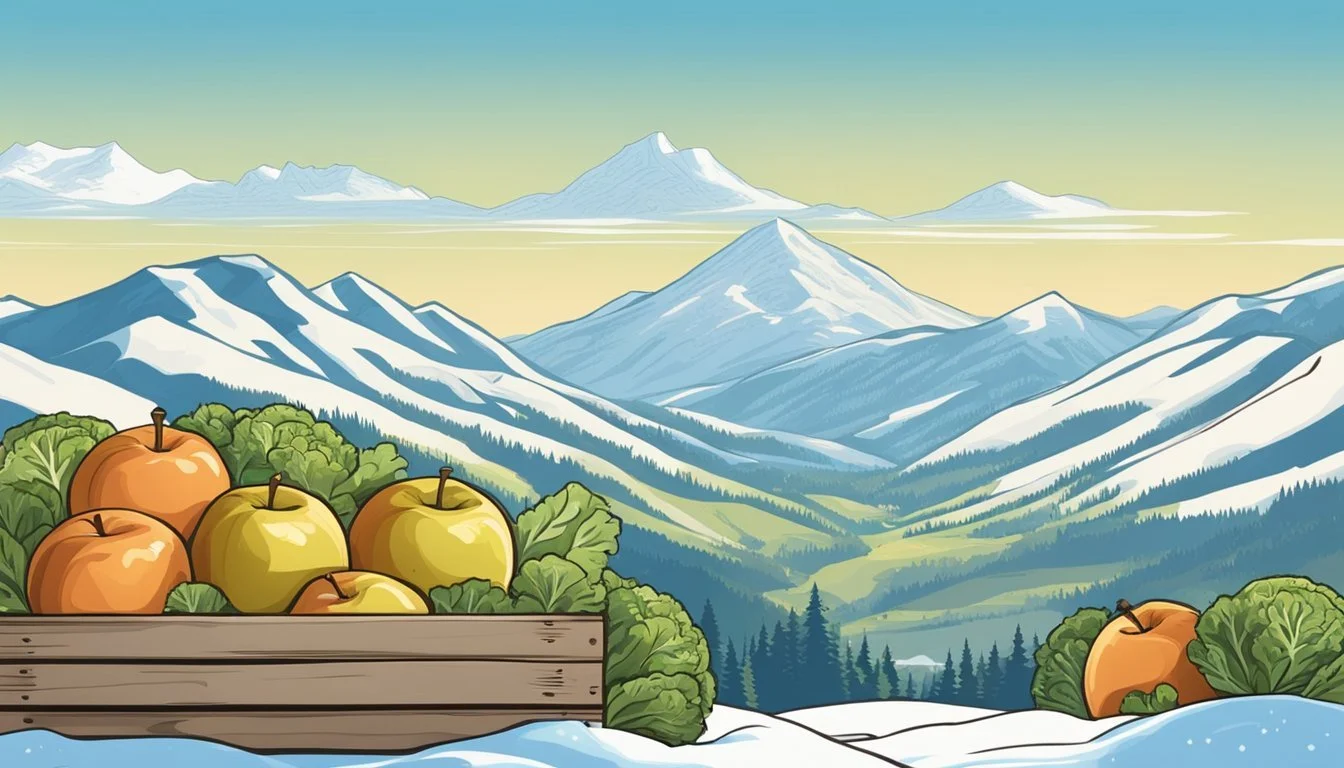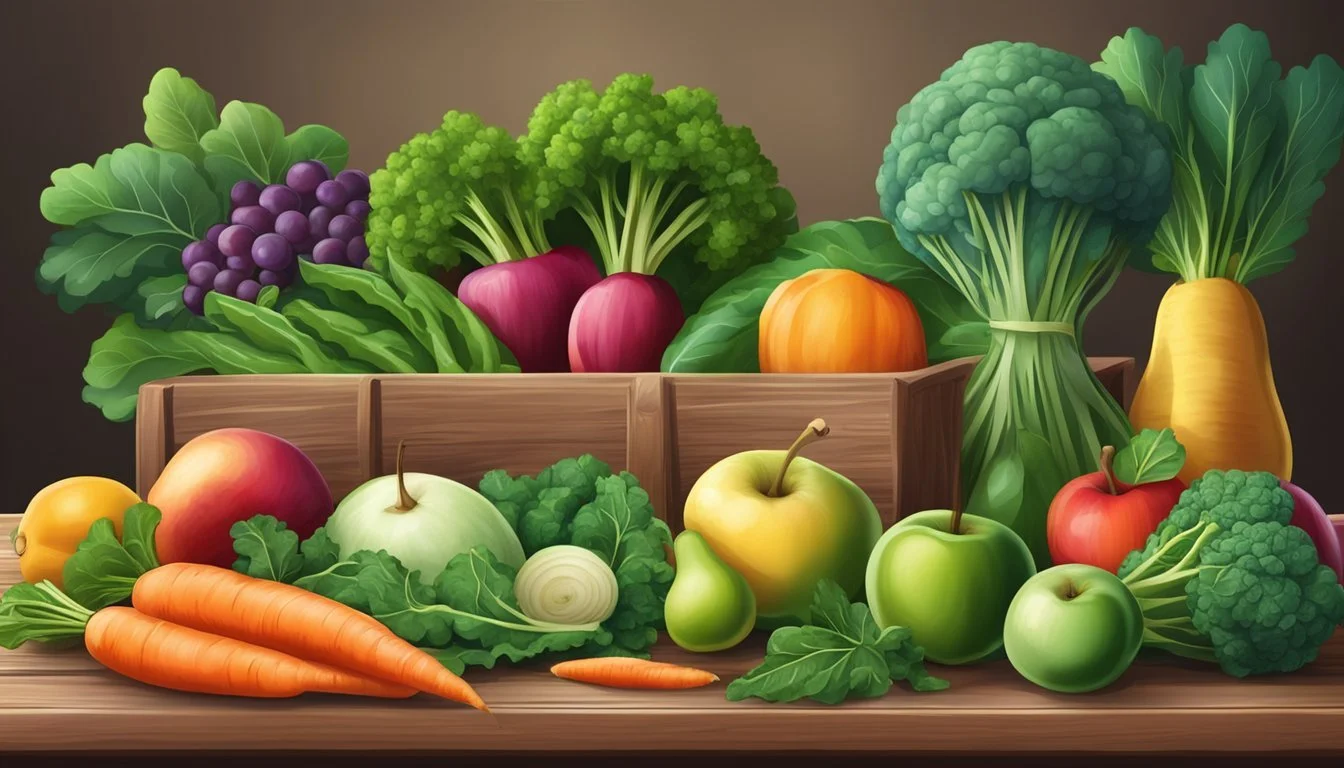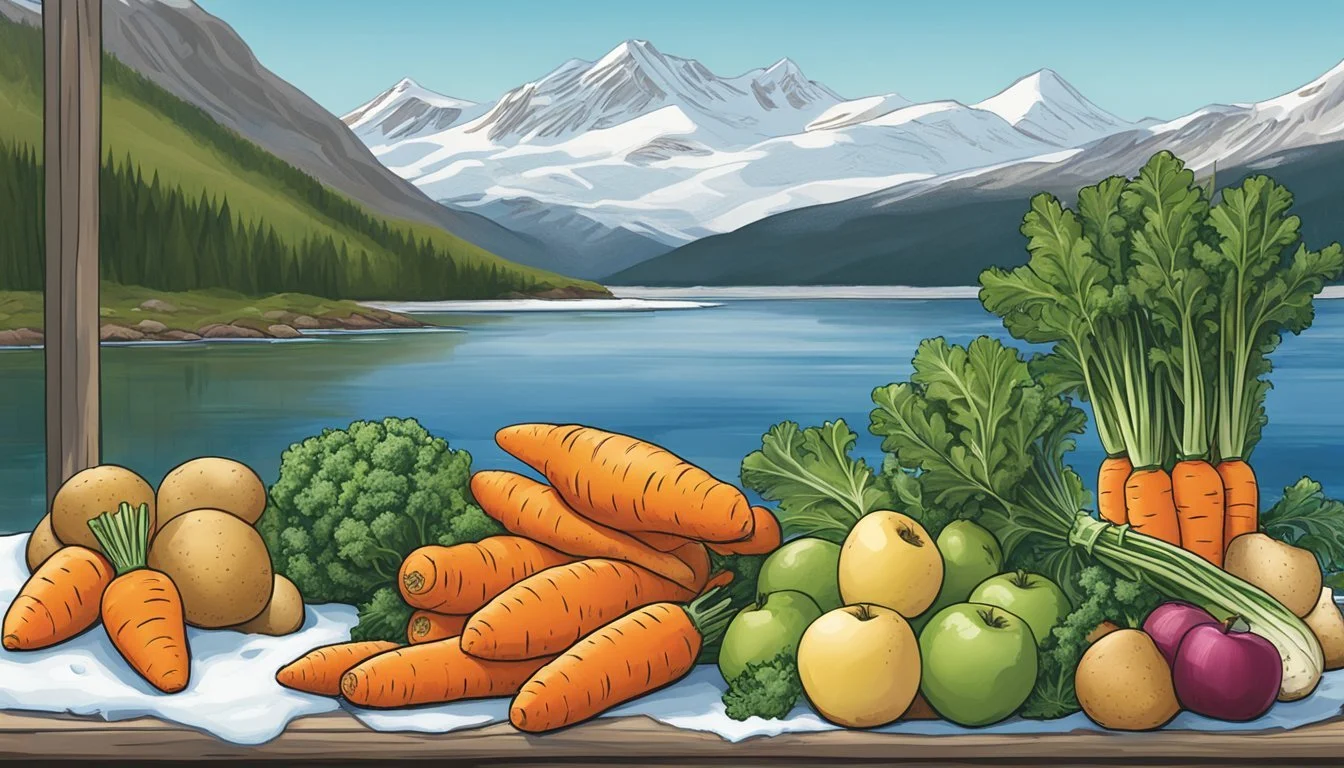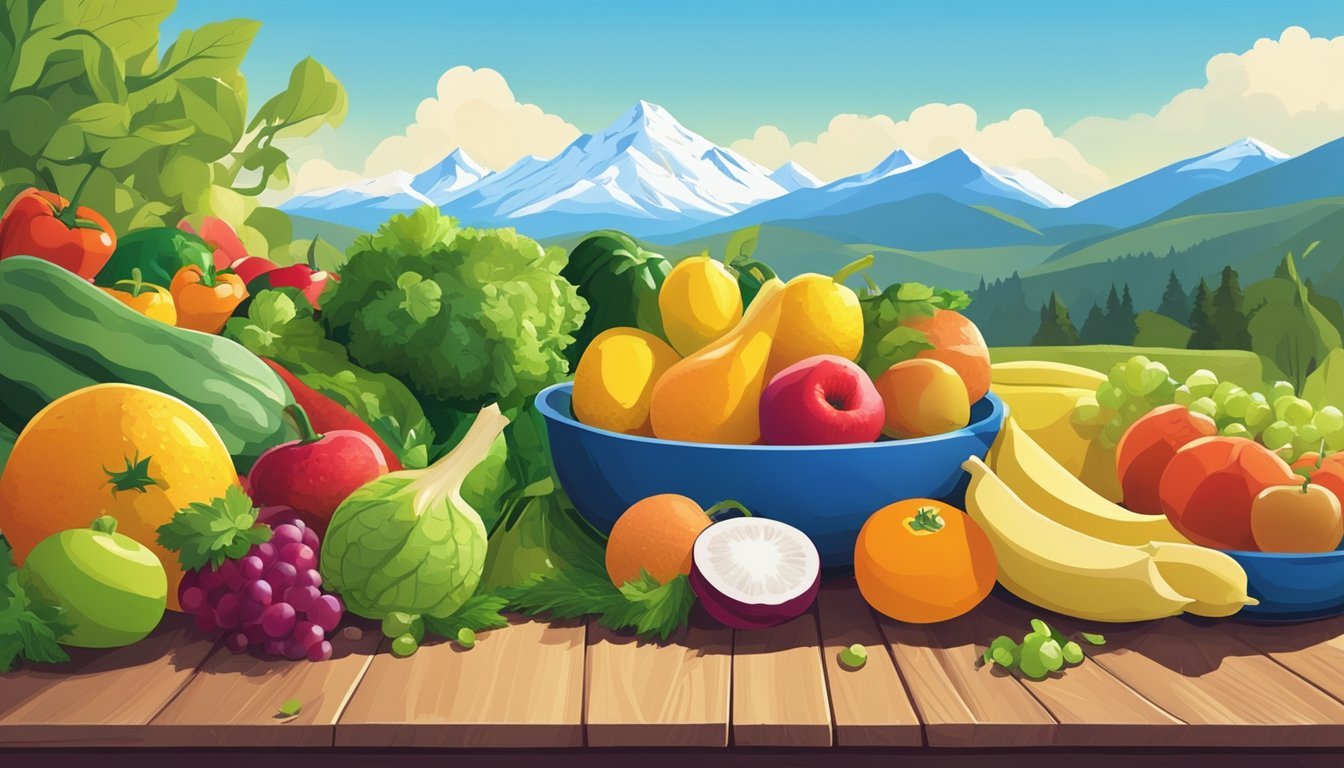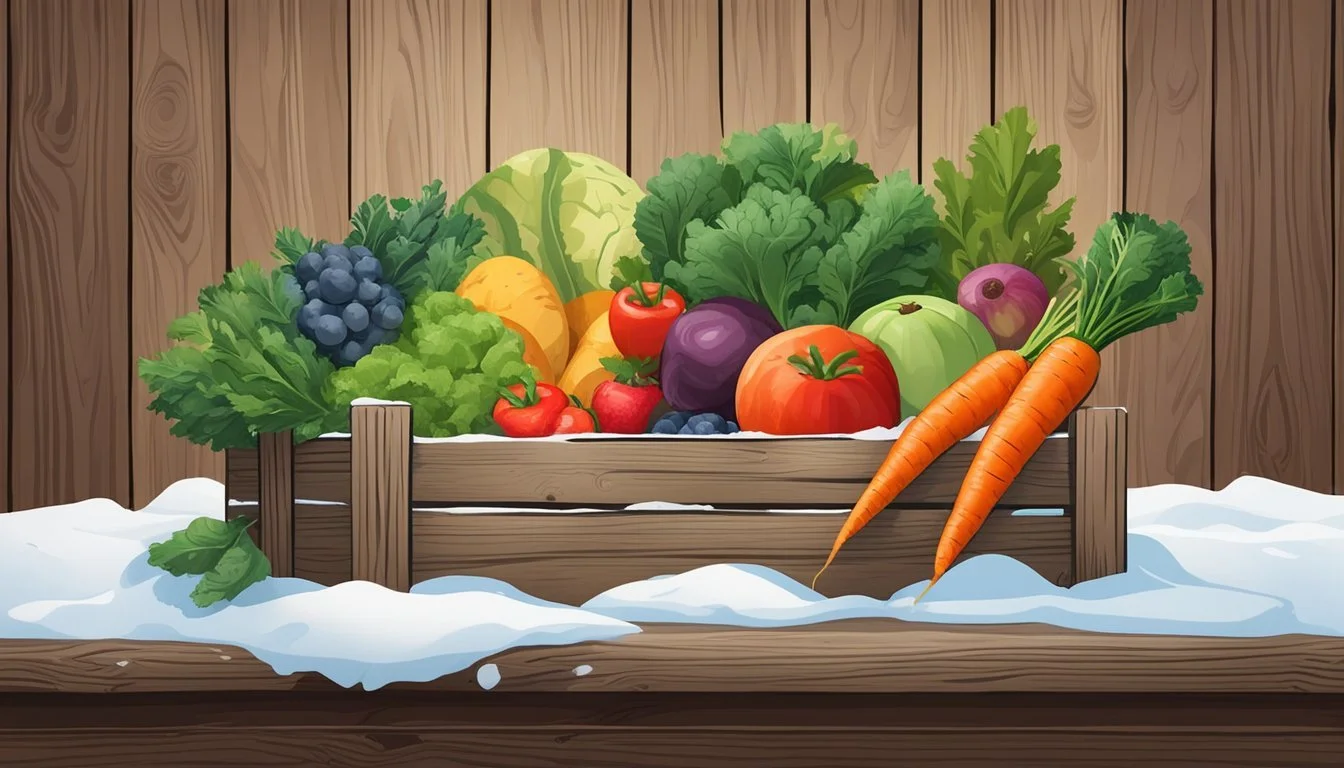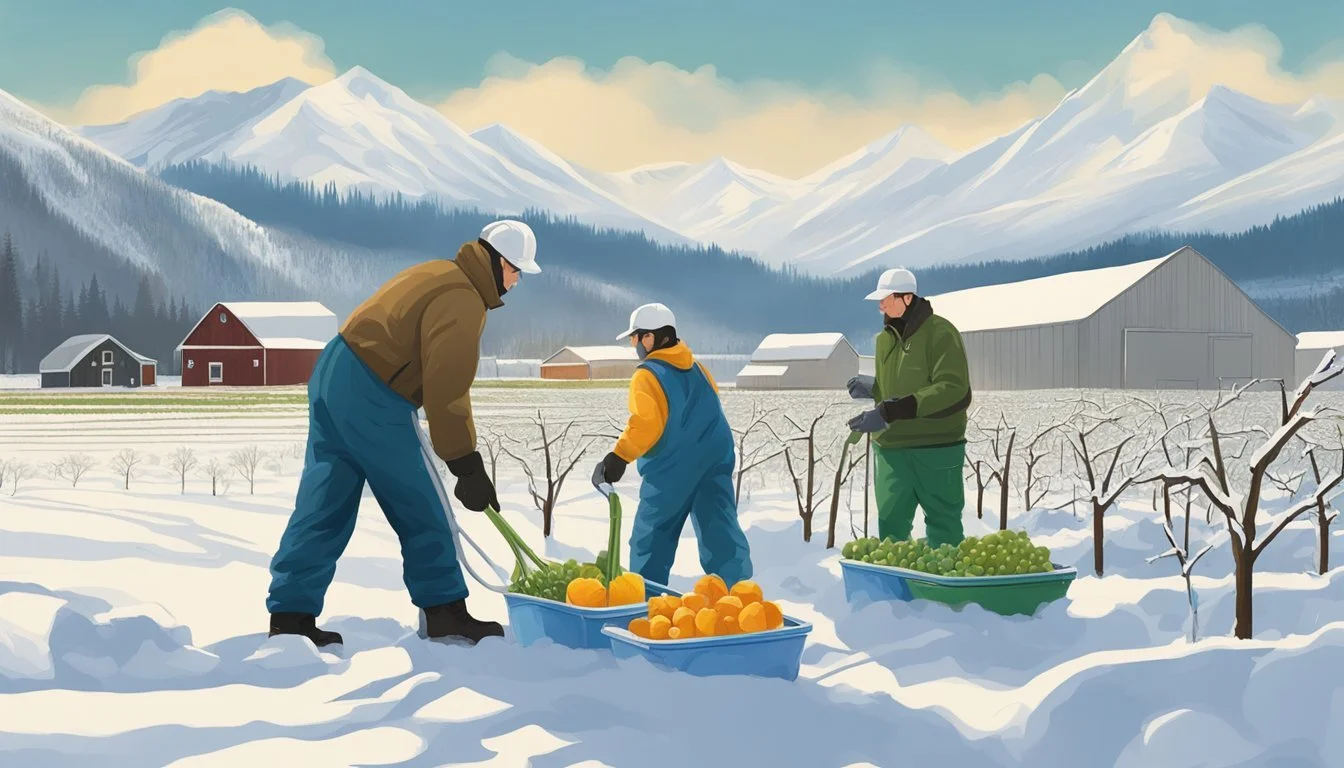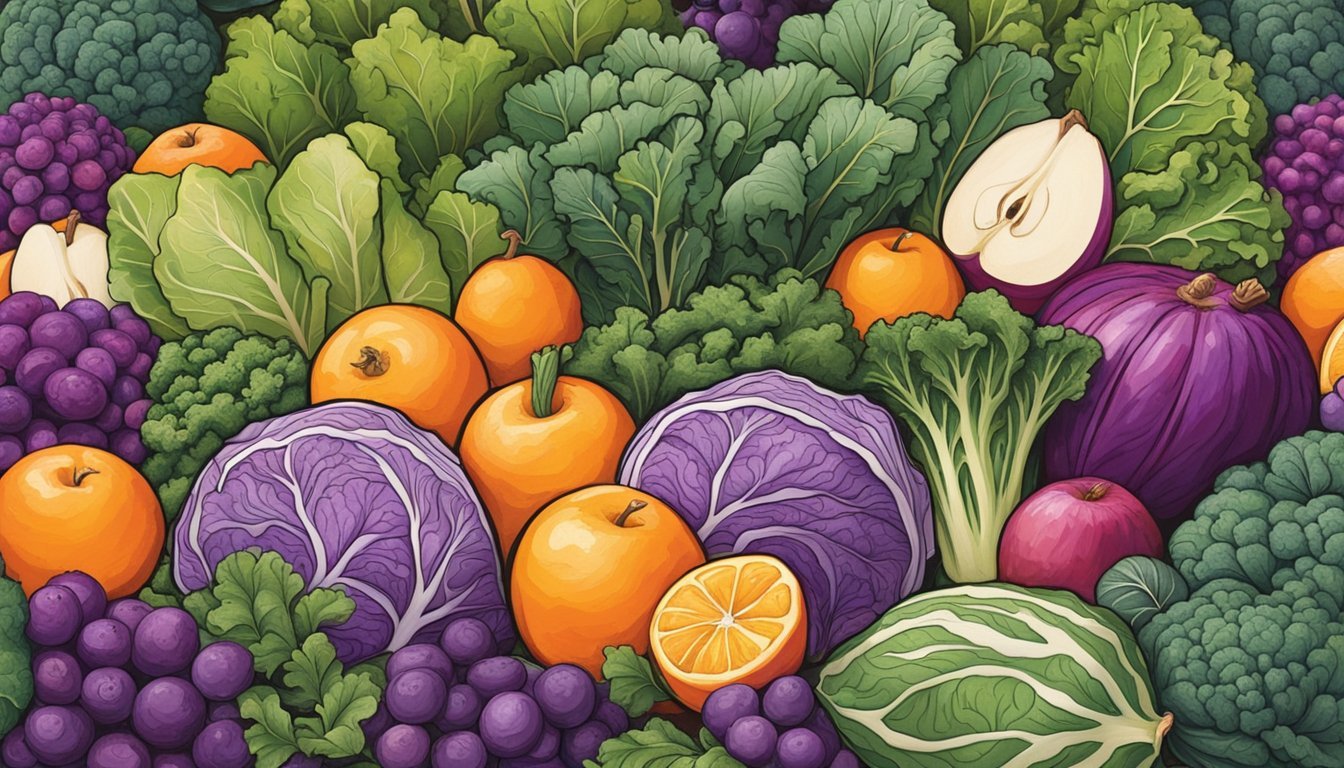Alaska Seasonal Fruit & Vegetables in March
Your Guide to Fresh Produce
This Article is Part of our Alaska Seasonal Fruit & Veg Calendar
In Alaska, March marks the tail end of a long winter, and the agricultural season is still awakening from its dormancy. The vast Alaskan landscape, characterized by its unique climate and daylight patterns, presents a distinctive challenge to farming. With the arrival of spring, the focus for local produce might remain on those hearty crops that are available through cold storage from the previous season. Seasonal eating in this northernmost state leans heavily on stored root vegetables, preserved goods, and late-winter greenhouse harvests.
Despite the lingering cold, Alaskans begin to see a gradual increase in daylight, which encourages the growth of some early-season crops in controlled environments. While the selection of fresh produce is not as bountiful as it would be in the summer months, there are still several nutritious options available. Cool-weather greens and some fruits, such as apples stored from the previous autumn, can offer fresh flavors to the Alaskan table.
As the season slowly transitions, Alaskans utilize the remaining stores of vegetables like potatoes, cabbage, and carrots (how long do carrots last?) while awaiting the first new sprouts of spring. While March may not bring a wide variety of fresh fruits and vegetables to the forefront, it does offer a time of preparation and anticipation for the abundance that the coming months will provide to the local agricultural sector.
Understanding Seasonality in Alaska
In Alaska, the changing seasons have a profound impact on the availability of fresh produce, shaped by its unique climate and daylight patterns.
Transition from Winter to Spring
As Alaska emerges from the long, cold winter into spring, the environment undergoes a significant transition that influences its agricultural timetable. The lingering chill of March can still feel very much like winter, with certain areas only beginning to thaw.
Key Spring Produce:
Kale and other cold-tolerant greens start becoming available.
Root vegetables such as beets (how long do beets last?) may be planted, though not yet harvested.
Impact of Cold Climate on Growth Cycles
Alaska's cold climate greatly affects the growth cycles of seasonal produce. The state's hardiness zones, mostly falling under Zone 5 with some areas in Zone 6, guide gardeners on what and when to plant. March often sees preparations for the upcoming growing season rather than an abundance of fresh produce.
Challenges:
Shorter growing seasons limit the range of crops that can be planted.
Frost-sensitive plants must wait until the likelihood of freezing temperatures has passed.
by utilizing protected growing methods like greenhouses, some growers may extend the planting season, providing a headstart for certain crops.
Fruits Available in March
In March, Alaskans have limited access to locally grown fruits due to the harsh climate, but certain imports are available, particularly citrus fruits and some hearty late winter varieties that can withstand cold storage.
Citrus Fruits
Citrus fruits, mainly imported, are a fresh addition to the March offerings in Alaska. Lemons, with their tangy and citric flavor, remain a staple. They are widely used for their zesty qualities and are often featured in both sweet and savory dishes.
Lemons: They are available and offer a bright, sour taste that is versatile for culinary uses.
Late Winter Varieties
Transported in from milder climates, late winter fruit varieties provide a sweet reprieve during the chilly month. Apples, typically stored from the fall harvest, are still crisp and make for a nutritious snack or ingredient in pies and other desserts.
Apples: Available in several varieties, they retain their sweet taste and crisp texture due to controlled atmosphere storage.
Vegetables to Enjoy in March
In March, Alaska's produce selection begins to transition from hearty winter staples to the tender greens of early spring, offering a variety of vegetables that can be enjoyed during this period.
Hearty Winter Vegetables
Throughout March, individuals in Alaska can still savor the robust flavors of winter vegetables. These vegetables have been stored from previous harvests and remain a reliable source of nourishment.
Potatoes: A versatile staple that can be baked, mashed, or roasted.
Carrots: With their sweet flavor, they are ideal for stews and side dishes.
Cabbage: It offers a crunchy texture, suitable for slaws or fermented foods (What wine goes well with fermented foods?) like sauerkraut.
Cauliflower: Often found in abundance, it's perfect for roasting or turning into a creamy soup.
These vegetables tend to have a longer shelf-life and can withstand the colder temperatures that linger in early March.
Early Spring Green Vegetables
As the Alaskan climate slowly warms, a selection of green vegetables begins to make its appearance, heralding the promise of spring.
Spinach: This leafy green emerges, offering nutritional benefits and versatility in salads or cooked dishes.
Kale: Rich in nutrients, kale can be used in a variety of dishes, from raw salads to hearty soups.
Lettuce: Different varieties start to appear, refreshing and crisp for salads.
These green vegetables are some of the first signs of the changing season, bringing fresh flavors to the March table after the long winter.
Alaskan Specialties in Season
March is a transitional month for Alaska, signalling the end of winter and the slow beginning of spring. Fresh produce is limited, but there are still unique specialties that thrive in this period and are integral to local consumption.
Unique to the Region
Alaska's harsh climate shapes a unique growing environment, resulting in distinctive produce not commonly found elsewhere. In March, one might find high-bush cranberries still available from the previous fall. These berries, native to Alaska, are not true cranberries but share a similar flavor profile, and they can withstand the cold, often lingering well into the winter months.
Foraging and Local Varieties
Foraging remains a traditional practice in Alaska, especially in rural areas, as it provides access to nutrient-rich, seasonal food sources. March is still too early for most plant growth, but items like birch syrup, tapped from birch trees as they begin to thaw, start becoming available. While not a vegetable or fruit, birch syrup is a unique Alaskan product tied intimately to the season's changes. It is less sweet than its maple counterpart and is used in both sweet and savory dishes. Local varieties of produce, such as root vegetables stored from the previous autumn harvest, may still be fresh and available. These include potatoes, carrots, and beets, which are capable of being stored throughout the winter months due to their hardy nature.
Preparing Seasonal Produce
When handling Alaska's seasonal produce in March, one must consider the best practices for storage and the most suitable cooking techniques to maximize freshness and flavor.
Storage and Preservation Tips
Fresh Produce: Storing fresh vegetables and fruits properly extends their shelf life and preserves their quality. Hearty vegetables like carrots should be kept cool and dry, while leafy greens are best stored in the refrigerator's crisper where they can maintain moisture without becoming soggy.
Leafy Greens: Refrigerate in a plastic bag with a paper towel to absorb excess moisture.
Root Vegetables: Store in a cool, dark place; a basement or cellar can be ideal.
Fruits: Most should be kept at room temperature away from direct sunlight until ripe, at which point refrigeration can slow down spoilage.
Cooking Techniques
Cooking techniques can enhance the inherent flavors of vegetables and fruits and provide variety in dietary options.
Roasted: Root vegetables like carrots and potatoes develop a deep, sweet flavor when roasted; they can be simply seasoned with olive oil, salt, and pepper.
Pasta (how long does pasta last?): Incorporating vegetables such as kale can add both nutrition and color to pasta dishes.
Salad: Fresh crisp greens are perfect for salads; one can dress them lightly to let the flavors of the produce shine.
Steam: Steaming is a gentle way to cook vegetables, like kale, preserving nutrients and texture.
Grill: For a smoky flavor, grilling is suitable for sturdier vegetables; brushed with a bit of oil, they can take on an appealing char.
Soups: A variety of vegetables, fresh or stored, contribute to the hearty and warming qualities of soups; they are a practical method to use produce that may be slightly past its prime.
One should experiment with these techniques to find what best suits the produce they have. Recipes can serve as a guideline, but personal adjustments are encouraged to cater to individual preferences and the unique character of Alaska's seasonal offerings.
Nutritional Benefits of Seasonal Eating
Eating seasonally provides the freshest produce, which is typically more nutrient-dense. This is particularly true for fruits and vegetables harvested during their peak seasons. In Alaska, March presents a unique selection of produce that offers an array of vitamins and minerals essential for health.
Vitamins and Minerals in March Produce
During March, the available produce in Alaska may be limited, but it can still be a source of key nutrients:
Vitamin C: Crucial for immune function, some seasonal fruits and vegetables may offer this vital antioxidant.
Other Nutrients: Although March is not the peak time for a wide variety of produce in Alaska, root vegetables and winter greens that store well through the cold months can provide a healthy dose of other vitamins and minerals.
Health Advantages of Fresh Foods
Freshness: Seasonal produce, consumed close to the time of harvest, tends to retain more nutritional value, delivering a punch of flavor along with health benefits.
Nutrient Retention: Fresh, seasonal foods are less likely to have lost nutrients through long storage periods.
Healthy Eating Habits: Incorporating fresh, seasonal foods into one's diet can foster a habit of seeking out the freshest, most nutrient-rich options.
Challenges and Solutions for Alaskan Growers
Alaskan growers face a unique set of challenges due to the state's cold climate and short growing seasons. Innovative solutions are essential to combat these issues effectively.
Dealing with Pests and Diseases
Alaskan farmers must contend with pests and diseases that can thrive in the cold and bring about significant damage to crops. Pest management is crucial, often involving:
Monitoring: Regular inspection for early detection of pests and diseases.
Biological controls: Introduction of natural predators or parasites to reduce pest populations.
Cultural practices: Crop rotation and sanitation help prevent the spread of diseases.
Techniques for Extended Seasons
To mitigate the effects of a short growing season, Alaskan growers employ various techniques:
Greenhouses: By using greenhouses, they create microclimates that allow for an extended growing season.
Technique Description Row Covers Provides warmth and protects against frost. Thermal Mass Stores heat during the day to release at night. High Tunnels Structures that shield plants from the cold and wind.
Cultivar Selection: Choosing plant varieties that can endure colder temperatures or have quicker maturation rates.
Each technique must be tailored to the specific conditions of the region within Alaska to ensure the best possible outcomes for the growing season.
Incorporating Alaskan Produce into Meals
While March in Alaska doesn't offer the wide variety of produce found in the summer months, Alaskan residents still enjoy seasonal vegetables such as beets and turnips. These root vegetables, along with stored crops like potatoes and preserved goods, provide options to create wholesome meals throughout the day.
Breakfast Ideas
For a hearty start to the day, Alaskans often turn to root vegetables. A morning hash made with beets, potatoes, and onions, topped with a fried or poached egg, can offer a nutritious and filling breakfast. Incorporating garlic and herbs enhances the flavors and adds a rich aromatic twist to the dish.
Lunch and Dinner Inspirations
Lunch (What wine goes well with lunch?) and dinner in Alaska focus on incorporating root vegetables and legumes into satisfying meals. Casseroles with layers of thinly sliced turnips, potatoes, and onions, seasoned with garlic and thyme, make for a comforting meal. For something lighter, salads can be crafted with crisp greens such as kale, embellished with radishes and a hearty grain like barley or quinoa.
Bean stew: A warm bean stew with a medley of Alaskan vegetables like onions and garlic forms a nutrient-dense option for lunch or dinner.
Artichoke chicken: A dish featuring chicken breasts served with sautéed artichokes (What wine goes well with artichokes?) and garlic in a white wine reduction offers a flavorsome entrée.
Creative Side Dishes
Side dishes provide an opportunity to get creative with Alaskan produce. Try roasting turnips and beets to bring out their natural sweetness, or sautéing radishes in butter for a tender and peppery complement to any main course.
Roasted Beets and Turnips: Cube and roast beets and turnips with a drizzle of olive oil and a sprinkle of sea salt (how long does sea salt last?) to create a simple yet satisfying side.
Sautéed Radishes: Thinly slice radishes and sauté them in butter with a touch of lemon juice for a side dish with a delightful crispness.
Conclusion
When considering the bounty of Alaska's seasonal produce in March, buyers should note the limited options due to the region's harsh climatic conditions. Though the growing season has not yet commenced, there are still some storage vegetables and potential early greenhouse-grown items available.
Vegetables:
Root vegetables from storage may still be accessible, including carrots and potatoes.
Greenhouse ventures may provide limited quantities of greens such as kale or lettuce.
Fruits:
Fresh fruits are typically not in season during this time, due to Alaska's short growing season which starts later in the year.
Preserved fruits from the previous season, such as jams or canned goods, might be on offer.
Tips for March:
Explore local markets for greenhouse-grown produce.
Consider preserved or stored items for seasonal flavors.
Prepare for the coming season by planning out spring and summer garden activities.
Consumers in Alaska should remain aware of the season's limitations while also taking advantage of the unique opportunities it presents — from stored root vegetables to the anticipation of greenhouse-grown produce. Adapting recipes to make use of these items can lead to enjoyable and sustainable culinary experiences.

